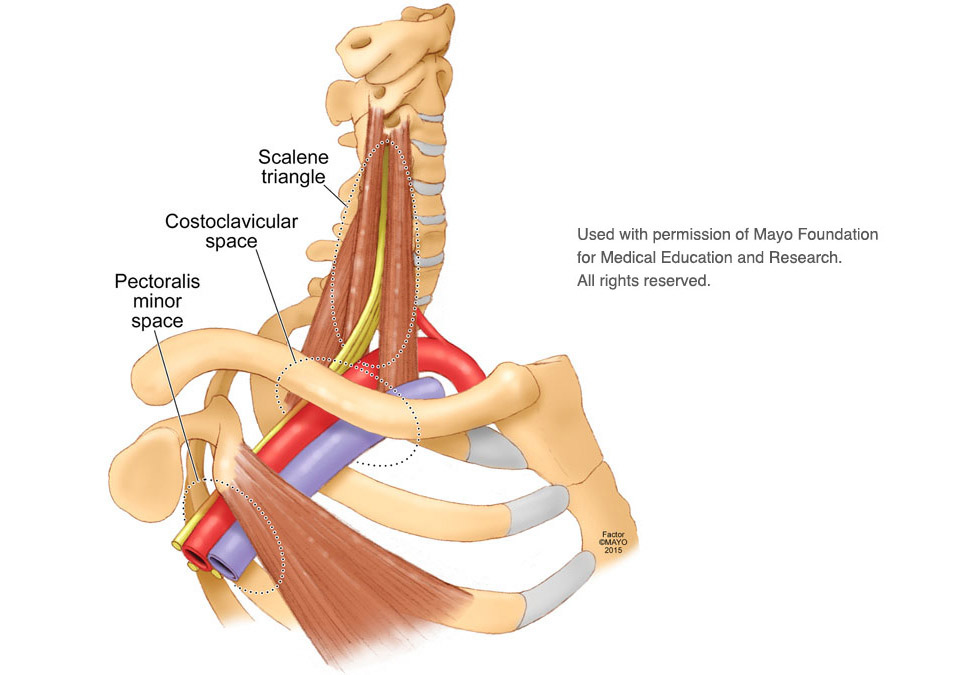The syndrome is caused by compression or impingement upon the nerves, vein or artery supplying the upper limbs. Compression of the nerves is referred to as neurogenic TOS (NTOS). This causes symptoms of numbness, tingling, weakness and pain down the arm to the hand and fingers as well as upper body, head and neck pain. In serious or neglected cases, NTOS leads to muscle wasting and irreversible weakness. NTOS is thought to constitute more than 90% of all TOS cases seen.

If the vein is compressed – venous TOS (VTOS) constituting less than 10% of cases – significant swelling usually occurs, with enlargement of the veins of the arm and even into the chest. This causes pain and disability, and can be associated with pulmonary embolisation (blood clot in the lung) if severe. Damage to the artery – arterial TOS (ATOS), occurring in approximately 1% of cases – can cause problems with blood supply to the arm, making it tired and painful especially with activity, or can lead to outright occlusion and/or embolisation. This is most commonly associated with bony anomalies, extra ribs or fibrous bands.
A person with TOS can have one, two or all of these subtypes on one or both sides. The site of compression may be between muscles at the side of the neck above the first rib, between the first rib and the collarbone and/or beneath the pectoralis minor chest muscle.
The Syndrome
Thoracic outlet syndrome may be caused by traumatic, sporting or occupational factors, which may act alone, or in combination with congenital variations within the structures surrounding the neurovascular bundle.
TOS may be diagnosed in people of any age but often develops in fit young productive individuals including children, adolescents and even athletes. In the UK the incidence and prevalence of TOS is unknown. In the USA it is estimated to affect as many as 80 out of every 1000 within the population, there is no reason to think that the UK numbers are any different.
Undiagnosed, untreated TOS can result in chronic pain and life crippling disability in young, productive patients. TOS properly diagnosed and correctly treated is life changing.
Some patients are either told or made to feel that they are suffering from a psychiatric disorder or “functional pathology”. This lack of validation, as well as the persistent pain and disability, results in a corrosive effect on the personality of the individual.




